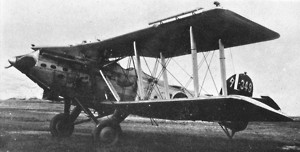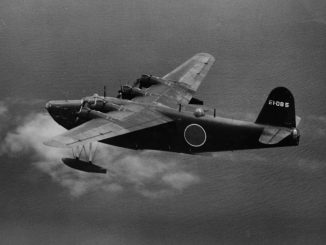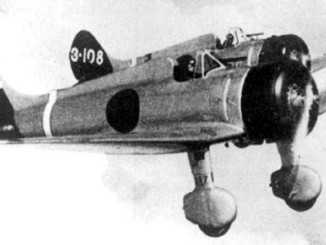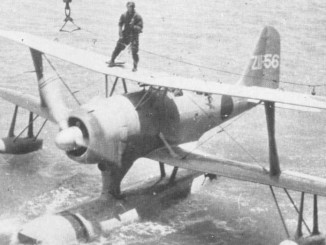
In 1927 the Japanese Navy was looking for a replacement for its Type 13 torpedo bombers. Mitsubishi, hoping to win the contract, commissioned the British firm Blackburn Aircraft to produce a design. Blackburn elected to base the design on their Ripon torpedo bomber which was already being developed for the Fleet Air Arm. A prototype was built and test flown in the UK in 1929, before being shipped to Japan. There it won the competition, and was designated the B2M, or Type 89.
The design was a fixed-undercarriage biplane, built from tubular steel, with seats for three crew: a pilot, navigator, and radioman/gunner. It was equipped with a pair of 7.7mm machine guns, one firing forward, the other on a flexible mount for the rear gunner. One 18in aerial torpedo could be carried, or 800kg of bombs, on external mounts beneath the fuselage.
Type 89s were just entering service as the Shanghai Incident began in 1932. They were still flying from the Kaga and Hosho as the Sino-Japanese War began in 1937, where they flew bombing raids against Shanghai, Nanking, and surrounding towns. By this time, however, more advanced types such as the B3Y and B4Y were due to enter service to replace the B2M.
Mitsubishi B2M Type 89 Specifications
| Mitsubishi B2M1 | |
| Role | Carrier Attack Bomber |
| Crew | 3 |
| Powerplant | 1x Hispano-Suiza 12Lbr (650hp) |
| Speed | 132mph (max) |
| Ceiling | 14,700ft |
| Range | 1,105 miles (internal) |
| Armament | 2x Type 89 7.7mm Machine gun |
| Ordnance | 1,764lb bombs 1 torpedoes |
| Dimensions | 33ft 8in (length) 49ft 11in (wingspan) 12ft 2in (height) |
| Wing Area | 592 sq.ft. |
| Weight | 4,982lb (empty) 7,900lb (gross) |




Leave a Reply